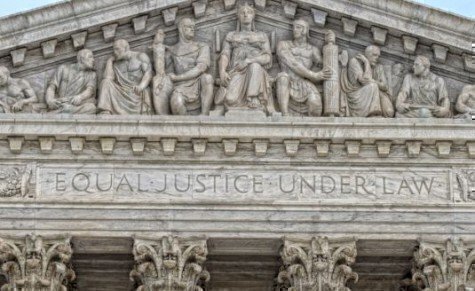The new year will bring a new nominee to the Supreme Court with an incoming Republican administration taking over the White House, and three long-overdue cases finally will get a spot on the Supreme Court calendar.
 It has been 281 days since President Barack Obama nominated federal judge Merrick Garland to the Supreme Court to replace the late Justice Antonin Scalia. The nomination will run out in January 2017, when a new Congress convenes and Donald Trump takes his oath as President, nominating his own candidate to the Court.
It has been 281 days since President Barack Obama nominated federal judge Merrick Garland to the Supreme Court to replace the late Justice Antonin Scalia. The nomination will run out in January 2017, when a new Congress convenes and Donald Trump takes his oath as President, nominating his own candidate to the Court.At that point, the Court could schedule three cases that were among the last cases Scalia considered in private conferences, where at least four Justices need to agree that a case is accepted for arguments.
On January 15, 2016, the Court issued a miscellaneous order granting eight cases certiorari, acknowledging that the Supreme Court would review lower-court decisions on appeal. Scalia passed away about a month later in Texas. Perhaps the most high-profile of those eight cases was McDonnell v. United States, where former Virginia Governor Bob McDonnell challenged a corruption conviction. McDonnell won his case in the Supreme Court on June 27, 2016.
The three cases that remain from that order, court watchers believe, were cases that Scalia voted to accept and spoke to issues that interested him – which would explain why they have been delayed.
In Trinity Lutheran Church of Columbia v. Pauley, the Court seeks to answer the question of whether religiously affiliated schools can be constitutionally denied equal access to a government benefit, even if the benefit has nothing to do with matters of faith.
At issue is a program in Missouri that provides rubberized material for school playgrounds, made out of old tires. Missouri’s constitution bars parochial schools from such public benefits, explicitly because of the Missouri constitution’s “Blaine Amendment,” first adopted in 1875. The amendment still reads in part: “No money shall ever be taken from the public treasury, directly or indirectly, in aid of any church, sect, or denomination or religion”
The church appealed to the Supreme Court, arguing that “no public benefit could be further removed from the state’s anti-establishment concerns than a grant for safe rubber playground surfaces that serve no religious function or purpose.”
In the second case, the Supreme Court will look back at one of its big decisions from the 1970s when it hears a dispute involving four family members and the state of Wisconsin. In 1978, Justice William Brennan wrote for a 6-3 majority in the Penn Central v. New York City case that redefined property rights under the Fifth Amendment’s Takings Clause and also served as a foundation for historic preservation programs at a local level.
Now, the Court will consider that logic and a precedent from another noteworthy case in Murr v. Wisconsin. The Murr family has owned two riverfront lots since the 1960s; one of the lots contained a vacation cottage; the other lot wasn’t developed. The parents bought the two lots originally, and they were conveyed to four of their children in 1994 and 1995.
In 2004, when the children began to explore selling the empty lot to pay for improvements in the cottage, they found out that a zoning law established in 1975 barred the children from selling the empty lot separate from the cottage. The zoning law also prohibited the development of the empty lot because it didn’t meet minimum size requirements for an independent lot.
The family’s lawyers cited another Supreme Court decision, Lucas v. South Carolina Coastal Council (1992), which said that the denial of all economic use of a property by a government regulation was a taking under the Fifth Amendment and required just compensation. The state government argued that the properties should be considered as a “whole” in the takings analysis, citing the Penn Central decision.
And the third case addresses an issue involving class-action lawsuits that Scalia had complained about in other decisions.
In Microsoft v. Baker, a group of consumers in Washington State sued Microsoft, complaining that its Xbox 360 device had a defect that caused an optical disc to spin out of control, making the machine unplayable.
The group sued as a class, since their individual claims would have been for small amounts, and pursuing them individually wasn’t feasible. The group then lost the lawsuit in a trial court but they also used a legal option called a voluntary dismissal of a claim with prejudice to keep the case alive.
The court accepted the Microsoft appeal to clear up a conflict among lower courts on the legality of the dismiss-then-appeal question.






